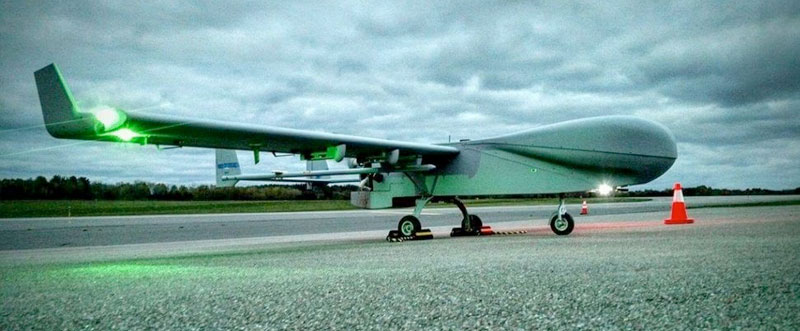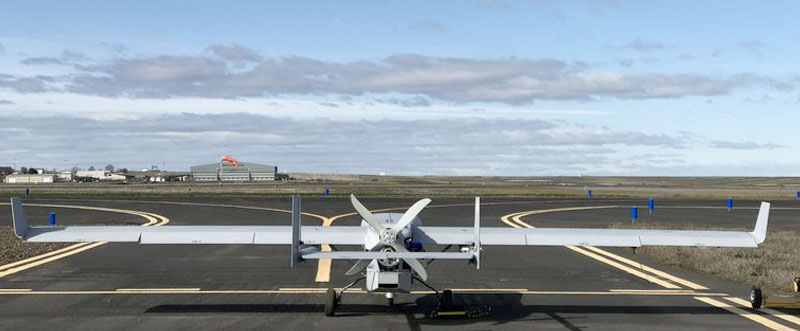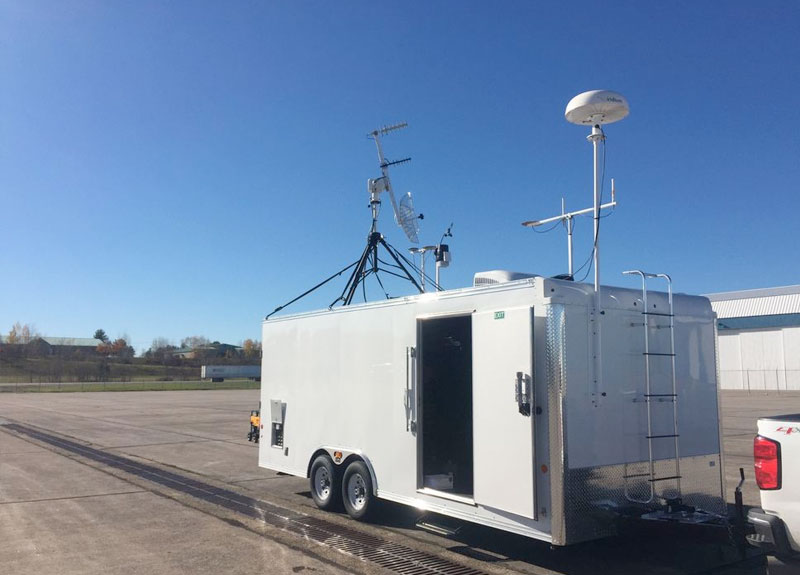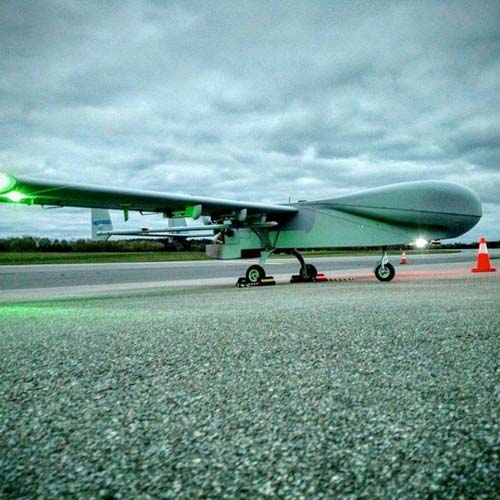
NASC in the News
NASC in the News
The Winter-Proof Drone That Will Watch the Arctic
The wide-open spaces of the Arctic are a dream for drone science. A maneuverable eye in the sky has made unmanned aircraft a go-to method for counting sea lion populations, mapping ice cover, and perhaps one day for search-and-rescue operations off Alaska’s coast.

But small drones bring their own inconveniences, too, like limited flight time and a small payload. That was a problem for the U.S. federal research facility Pacific Northwest National Laboratory (PNNL), which needed something that could carry lots of equipment to measure solar irradiance, three-dimensional windspeed, and analyze air particulates. It needed an aircraft to help climate scientists understand what’s happening in an ecosystem undergoing a massive transformation. However, a manned aircraft would be too expensive (and potentially dangerous), and no existing drone fit the bill.
So PNNL decided to build its own: the ArcticShark.
“We wrote two specifications, the higher one called for a 70-pound payload and an endurance of eight to ten hours,” says Dr. Beat Schmid, Associate Director at PNNL. “We didn’t think we’d be able to afford that.”
PNNL eventually turned to Navmar Applied Sciences Corporation‘s TigerShark military-grade surveillance drone. Although capable in many ways, the specs that interested PNNL were its ability to carry heavy payloads and its longer-than-average flight time. Originally built in 2005, the TigerShark has a proven track record with some 200 aircraft chalking up 100,000 flight hours among them.
With some adjustments, Navmar created the weather-hardened ArcticShark, a drone with a 22-foot wingspan, a max speed of 75 mph that can climb to 15,000 feet, and can fly while weighing in at 625 pounds. To top it off, the ArcticShark also delivers a hefty four kilowatts of power to its onboard scientific weather instruments—all at a price that was cheaper than anticipated.

Building a bigger, more efficient drone is one thing. Building one that can survive the Arctic, where minimum temperatures can drop as low as -50 degrees C, is another challenge entirely. A buildup of ice on wings can cause drag, spoil aerodynamics, and freeze control surfaces in position. In polar regions it can take the more extreme form of ice fog also known as pogonip, a Native American term which translates as ‘white death’. The fog freezes onto any surface it contacts, producing rapid and dangerous ice buildup.
Although an annoyance for massive airliners, it’s an even bigger deal for a much smaller drone with a meteorological mission to deliberately fly through clouds. Even the Air Force’s RG-4 Global Hawks lack de-icing an cannot fly in icy conditions. And on a small drone, where every ounce is taken into account, the size and weight of de-icing equipment can quickly shrink a drone’s already limited payload.
So for the ArcticShark, Navmar are in the process of developing a special electric-powered coating, like a more sophisticated version of the heaters in your car’s windscreen. Built with carbon nanotubes, this coating will transfer heat from electric elements to the wing surfaces. Since the coating will be painted on, it won’t affect aerodynamics and will save power requirements by only heating areas affected by ice buildup.
The ArcticShark’s 60-hp, fuel-injected engine means there’s no threat of icing, and all the flight electronics are hardened to withstand temperatures of -20 degrees C (or -4 Fahrenheit). The servomotors use special low-temperature lubricant, and Navmar fitted EPDM weather seal gasketing to all access hatches, ports, and panels to prevent accumulating moisture and ice.
Aside from this aerial feat of Arctic engineering, the ArcticShark’s ground station is marvel all its own. This transport module doubles as an operations center, built with layers of insulation and wall/floor heating, that’s warm enough for a three-person ground crew.
Inside this control room on wheels, it’s actually pretty roomy and comfortable. “With the lights off its like a movie theater of unmanned excitement,” says one operator.After any flight, ArcticShark can be dismantled, stored inside the module, and towed away.

Toss in an upgraded satellite communications system, and you have a ice-resistant drone capable of hauling scientific gear hundreds of miles away at 10-hour intervals. In other words, PNNL had finally found its drone.
“This platform will give scientists worldwide access to a suite of measurements about the Arctic that are currently not available,” says Tom Rickey of PNNL, who plans to make the drone available to any scientist or research group who needs it. “It gives them data to explore new questions.”
ArcticShark has now completed flight testing and will be carrying out its first research flights in Alaska next year, and Navmar are also talking to other customers who may be interested in the drone.
Because of the newly formed transportation routes due to climate change and the polar region’s untapped oil and gas reserves—not to mention Russia’s increasing interest in the area—Arctic-proof drones will likely become a common sight in the skies of the far North.
which created a drone that can deliver a hefty four kilowatts of power to the scientific weather instruments on board at even less of an expense than thought possible.


